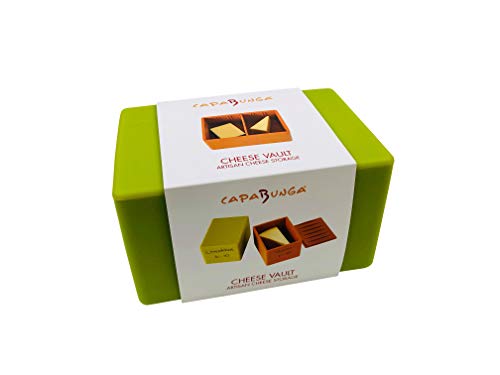Many cheeses—blue, brie, Stilton, and others—are preserved in mold. So why do the leftovers grow mold of a whole other (gross) caliber?
Videos by Suggest
It turns out it’s all about the storage. Wrapping leftover cheese in plastic or foil, or sealing it in Tupperware is not the way to go. An air-tight seal, in this case, is not your friend.
Because cheese contains many active microorganisms, it needs a bit of airflow so it can breathe. That’s why sealing off the airflow leads to mold growth.
Breathable, porous materials are a better option, and while they may not be as readily available as plastic wrap or Tupperware, it’s not so difficult to find products designed precisely for preserving your cheese the proper way.
Waxy layers of cheese paper ensure that the cheese stays fresh and flavorful while allowing it to breathe. Wrap the cheese in the paper like a gift, and if you make sure all surfaces of the cheese come in contact with the paper, it will stay fresh for a long time.
In addition to cheese paper, you can also find cheese storage bags, which offer the same level of freshness and extended shelf life as paper with the added convenience of not having to wrap it.
Proper Fridge Placement For Cheese
It’s a bad idea to wrap your cheese in plastic, but it’s not the only thing that can cause cheese to spoil. Placing it in the wrong part of the fridge could also be doing more harm than good.
After wrapping your cheese in cheese paper or a cheese storage bag, store it in the produce drawer. If cheese is exposed to the cold air in the refrigerator’s main compartment, it will dry out and go bad more quickly.
If you’re a hardcore cheese-a-holic, a cheese vault is an ideal way to extend the life of your favorite cheese. A vault keeps cheese fresh by wicking away moisture and protecting it from fridge odors.
Certain hard cheeses and even some soft cheeses don’t require any refrigeration if you plan on eating them within a few days. In that case, a cheese dome is all you need to keep it fresh.
Experts say it’s rare to have to throw out a hunk of cheese. And if you do encounter some questionable mold, that doesn’t necessarily mean the entire batch is destined for the trash. Since cheese has a low water content, it doesn’t allow mold to penetrate deeply, so you can usually scrape or cut off the mold and pretend you never saw it.




